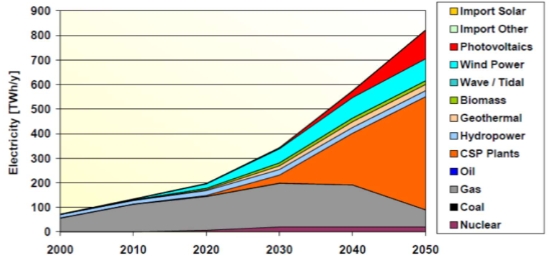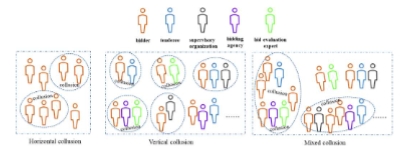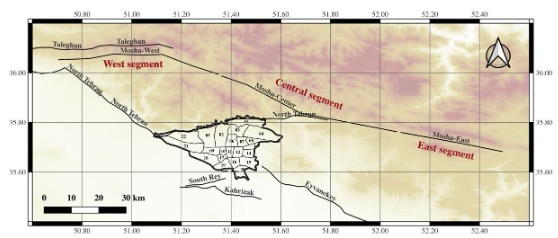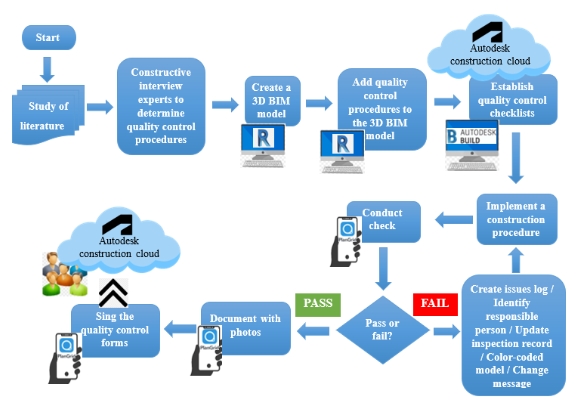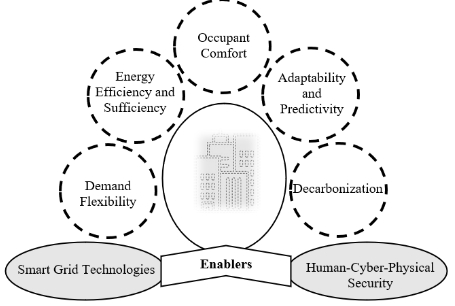A review on significance of thermal comfort in educational facilities
Abstract
Climate change and the urgency of decarbonizing the built environment drive technological innovation in delivering thermal comfort to occupants. Studies have shown that thermal discomfort can lead to a decline in students’ cognitive function, motivation, absenteeism, and a decrease in instructors’ work performance. This article reviews significant changes, developments, and trends in thermal comfort research for educational facilities classrooms. This study summarizes research regarding the importance of environmental comfort in education facilities, different climatic regions, and various parameters that play a vital role in determining thermal comfort. The investigation of the current literature showed that researchers focused on different issues, adopting diverse models and indices to investigate thermal comfort in classrooms. Indeed, even if the environmental conditions comply with standards, in several cases, a prolonged stay indoors affects the health and productivity of students. However, it is important to focus on students’ preferences in different regions, climates, and educational stages to create healthy and human-centered buildings. It is also clear that current research trends mainly focus on cold regions of Europe, while, by educational level, secondary-stage classrooms are the least investigated; thus, further investigation is needed. Therefore, an integrated approach that considers both the positive and negative effects of indoor exposure is needed, including the individual preferences and needs of occupants in the least researched regions, such as Asia and Africa.
References
[1]Moreno-Rangel A, Sharpe T, McGill G, et al. Thermal comfort assessment of the first residential Passivhaus in Latin America. Journal of Building Engineering. 2021; 43: 103081.
[2]Baloch RM, Maesano CN, Christoffersen J, et al. Indoor air pollution, physical and comfort parameters related to schoolchildren’s health: Data from the European SINPHONIE study. Science of the Total Environment. 2020; 739: 139870.
[3]Jing S, Lei Y, Wang H, et al. Thermal comfort and energy-saving potential in university classrooms during the heating season. Energy and Buildings. 2019; 202: 109390.
[4]Alfano FRA, Dell’Isola M, Palella BI, et al. On the measurement of the mean radiant temperature and its influence on the indoor thermal environment assessment. Building and Environment. 2013; 63: 79–88.
[5]Baker L, Bernstein H. The impact of school buildings on student health and performance. A Call for Research. 2012.
[6]Appah-Dankyi J, Koranteng, C. An assessment of thermal comfort in a warm and humid school building at Accra, Ghana. Applied Science Research. 2012.
[7]Mendell MJ, Heath GA. Do indoor pollutants and thermal conditions in schools influence student performance? A critical review of the literature. Indoor Air. 2005; 15(1): 27–52.
[8]Barrett P, Davies F, Zhang Y, et al. The impact of classroom design on pupils’ learning: Final results of a title. Building and Environment. 2003.
[9]Zomorodian ZS, Tahsildoost M, Hafezi M. Thermal comfort in educational buildings: A review article. Renewable and Sustainable Energy Reviews. 2016; 59: 895–906.
[10]Wargocki P, Wyon DP. Ten questions concerning thermal and indoor air quality effects on the performance of office work and schoolwork. Building and Environment. 2017; 112: 359–366.
[11]Lamberti G, Salvadori G, Leccese F, et al. Advancement on Thermal Comfort in Educational Buildings: Current Issues and Way Forward. Sustainability. 2021; 13(18): 10315.
[12]Singh MK, Ooka R, Rijal HB, et al. Progress in thermal comfort studies in classrooms over last 50 years and way forward. Energy and Buildings. 2019; 188: 149–174.
[13]Wang Z. A field study of the thermal comfort in residential buildings in Harbin. Building and Environment. 2012; 41(2006): 1034–1039.
[14]Liu H, Ma X, Zhang Z, et al. Study on the relationship between thermal comfort and learning efficiency of different classroom-types in transitional seasons in the hot summer and cold winter zone of China. Energies. 2021; 14(19): 6338.
[15]Shi Z, Liu Q, Zhang Z, et al. Thermal Comfort in the Design Classroom for Architecture in the Cold Area of China. Sustainability. 2022; 14(14): 8307.
[16]Sanguinetti SOA, Pistochini T, Hoffacker M. Understanding teachers’ experiences of ventilation in California K-12 classrooms and implications for supporting safe operation of schools in the wake of the COVID-19 pandemic. Indoor Air. 2022.
[17]Schweiker M, Ampatzi E, Andargie MS, et al. Review of multi‐domain approaches to indoor environmental perception and behaviour. Building and Environment. 2020; 176: 106804.
[18]Jindal A. Thermal comfort study in naturally ventilated school classrooms in composite climate of India. Building and Environment. 2018; 142: 34–46.
[19]Nambiar C, Hart R, Rosenberg M, et al. End Use Analysis Of ANSI/ASHRAE/IES Standard 90.1-2019. ASHRAE Journal. 2023; 65(4).
[20]Guevara G, Soriano G, Mino-Rodriguez I. Thermal comfort in university classrooms: An experimental study in the tropics. Building and Environment. 2021; 187: 107430.
[21]Mamani T, Herrera RF, Muñoz-La Rivera F, et al. Variables that affect thermal comfort and its measuring instruments: A systematic review. Sustainability. 2022; 14(3): 1773.
[22]Sadrizadeh S, Yao R, Yuan F, et al. Indoor air quality and health in schools: A critical review for developing the roadmap for the future school environment. Journal of Building Engineering. 2022; 57: 104908.
[23]Aghniaey S, Lawrence TM, Sharpton TN, et al. Thermal comfort evaluation in campus classrooms during room temperature adjustment corresponding to demand response. Building and Environment. 2019; 148: 488–497.
[24]Fabozzi M, Dama A. Field study on thermal comfort in naturally ventilated and air-conditioned university classrooms. Indoor and Built Environment. 2020; 29(6): 851–859.
[25]Jindal A. Investigation and analysis of thermal comfort in naturally ventilated secondary school classrooms in the composite climate of India. Architectural Science Review. 2019; 62(6): 466–484.
[26]Korsavi SS, Montazami A, Mumovic D. Indoor air quality (IAQ) in naturally-ventilated primary schools in the UK: Occupant-related factors. Building and Environment. 2020; 180: 106992.
[27]Nakagawa A, Ikeda H, Maeda Y, et al. A survey of high school students’ clothing in classroom. Journal of Building Engineering. 2020; 32: 101469.
[28]Jowkar M, Rijal HB, Brusey J, et al. Comfort temperature and preferred adaptive behaviour in various classroom types in the UK higher learning environments. Energy and Buildings. 2020; 211: 109814.
[29]Alatalo E. Enhancing the building performance of low-cost schools in Pakistan-A study of natural ventilation, thermal comfort and moisture safety. Available online: https://publications.lib.chalmers.se/records/fulltext/245948/245948.pdf (accessed on 4 June 2023).
[30]Ma F, Zhan C, Xu X, et al. Winter thermal comfort and perceived air quality: A case study of primary schools in severe cold regions in China. Energies. 2020; 13(22): 5958.
[31]Korsavi SS, Montazami A. Children’s thermal comfort and adaptive behaviours; UK primary schools during non-heating and heating seasons. Energy and Buildings. 2020; 214: 109857.
[32]Munonye C. The influence of seasonal variation of thermal variables on comfort temperature in schools in a warm and humid climate. Open Access Library Journal. 2020; 7(9): 1–13.
[33]Talukdar MSJ, Talukdar TH, Singh MK, et al. Status of thermal comfort in naturally ventilated university classrooms of Bangladesh in hot and humid summer season. Journal of Building Engineering. 2020; 32: 101700.
[34]Bughio M, Schuetze T, Mahar WA. Comparative analysis of indoor environmental quality of architectural campus buildings’ lecture halls and its’ perception by building users, in Karachi, Pakistan. Sustainability. 2020; 12(7): 2995.
[35]Aparicio-Ruiz P, Barbadilla-Martin E, Guadix J, et al. A field study on adaptive thermal comfort in Spanish primary classrooms during summer season. Building and Environment. 2021; 203: 108089.
[36]Wang X, Yang L, Gao S, et al. Thermal comfort in naturally ventilated university classrooms: A seasonal field study in Xi’an, China. Energy and Buildings. 2021; 247: 111126.
[37]Kumar S, Singh MK. Seasonal comfort temperature and occupant’s adaptive behaviour in a naturally ventilated university workshop building under the composite climate of India. Journal of Building Engineering. 2021; 40: 102701.
[38]Ikeda H, Nakaya T, Nakagawa A, et al. An investigation of indoor thermal environment in semi-cold region in Japan–Validity of thermal predictive indices in Nagano during the summer season. Journal of Building Engineering. 2021; 35: 101897.
[39]Alonso A, Llanos J, Escandón R, et al. Effects of the COVID-19 pandemic on indoor air quality and thermal comfort of primary schools in winter in a Mediterranean climate. Sustainability. 2021; 13(5): 2699.
[40]Korsavi SS, Jones RV, Fuertes A. Operations on windows and external doors in UK primary schools and their effects on indoor environmental quality. Building and Environment. 2022; 207: 108416.
[41]Khambadkone NK, Madhumati P, Ranganath MN. Thermal comfort evaluation in architectural studio classrooms–A summer study in a warm to moderate Indian climate. Indoor and Built Environment. 2022; 31(9): 2331–2365.
[42]Aguilar AJ, de la Hoz-Torres ML, Martínez-Aires MD, et al. Thermal perception in naturally ventilated university buildings in Spain during the cold season. Buildings. 2022; 12(7): 890.
[43]Torriani G, Lamberti G, Fantozzi F, et al. Exploring the impact of perceived control on thermal comfort and indoor air quality perception in schools. Journal of Building Engineering. 2023; 63: 105419.
[44]Hu J, He Y, Hao X, et al. Optimal temperature ranges considering gender differences in thermal comfort, work performance, and sick building syndrome: A winter field study in university classrooms. Energy and Buildings. 2022; 254: 111554.
[45]Lamberti G, Leccese F, Salvadori G, et al. Investigating the effects of climate on thermal adaptation: A comparative field study in naturally ventilated university classrooms. Energy and Buildings. 2023; 294: 113227.
[46]Riaz H, Arif S, Riaz A, et al. Evaluation of thermal comfort in University Classrooms of Pakistan. Revista de Educación. 2023.
[47]Shrestha M, Rijal HB. Investigation on Summer Thermal Comfort and Passive Thermal Improvements in Naturally Ventilated Nepalese School Buildings. Energies. 2023; 16(3): 1251.
[48]Bhandari N, Tadepalli S, Gopalakrishnan P. Influence of non-uniform distribution of fan-induced air on thermal comfort conditions in university classrooms in warm and humid climate, India. Building and Environment. 2023; 238: 110373.
[49]de la Hoz-Torres ML, Aguilar AJ, Ruiz DP, et al. An investigation of indoor thermal environments and thermal comfort in naturally ventilated educational buildings. Journal of Building Engineering. 2024; 84: 108677.
[50]Wu Z, Wagner A. Thermal comfort of students in naturally ventilated secondary schools in countryside of hot summer cold winter zone, China. Energy and Buildings. 2024; 305: 113891.
[51]Romero P, Valero-Amaro V, Isidoro R, et al. Analysis of determining factors in the thermal comfort of university students. A comparative study between Spain and Portugal. Energy and Buildings. 2024; 114022.
[52]Mustapha TD, Hassan AS, Khozaei F, et al. Examining thermal comfort levels and ASHRAE Standard-55 applicability: A case study of free-running classrooms in Abuja, Nigeria. Indoor and Built Environment. 2024; 33(1): 8–22.
[53]Yao R, Zhang S, Du C, et al. Evolution and performance analysis of adaptive thermal comfort models—A comprehensive literature review. Building and Environment. 2022; 217: 109020.
[54]Yadegaridehkordi E, Nilashi M. Moving towards green university: A method of analysis based on multi-criteria decision-making approach to assess sustainability indicators. International Journal of Environmental Science and Technology. 2022.
[55]Tasgaonkar P, Zade D, Ehsan S, et al. Indoor heat measurement data from low-income households in rural and urban South Asia. Scientific Data. 2022; 9(1): 285.
[56]Pereira PFC, Broday EE. Determination of Thermal Comfort Zones through Comparative Analysis between Different Characterisation Methods of Thermally Dissatisfied People. Buildings. 2021; 11(8): 320.
[57]Manu S, Shukla Y, Rawal R, et al. Field studies of thermal comfort across multiple climate zones for the subcontinent: India Model for Adaptive Comfort (IMAC). Building and Environment. 2016; 98: 55–70.
[58]Lala B, Murtyas S, Hagishima A. Indoor Thermal Comfort and Adaptive Thermal Behaviors of Students in Primary Schools Located in the Humid Subtropical Climate of India. Sustainability. 2022; 14(12): 7072.
[59]Bueno AM, de Paula Xavier AA, Broday EE. Evaluating the Connection between Thermal Comfort and Productivity in Buildings: A Systematic Literature Review. Buildings. 2021; 11(6): 244.
[60]Alghamdi S, Tang W, Kanjanabootra S, et al. Effect of Architectural Building Design Parameters on Thermal Comfort and Energy Consumption in Higher Education Buildings. Buildings. 2022; 12(3): 329.
[61]Field Study of Thermal Comfort in University Buildings in Malaysia. Available online: https://www.researchgate.net/publication/348555348_Field_Study_of_Thermal_Comfort_in_University_Buildings_in_Malaysia (accessed on 10 June 2024).
[62]Yang D, Mak CM. Relationships between indoor environmental quality and environmental factors in university classrooms. Building and Environment. 2020; 186: 107331.
[63]Ncube M, Riffat S. Developing an indoor environment quality tool for assessment of mechanically ventilated office buildings in the UK—A preliminary study. Building and Environment. 2012; 53: 26–33.
[64]Dixon T. What does “retrofit” mean, and how can we scale up action in the UK sector? Journal of Property Investment and Finance. 2014; 32(4): 443–452.
[65]Controls J. 2013 Energy Efficiency Indicator Survey. Institute for Building Efficiency; 2013.
[66]Blumberg D. The Economics of Green Retrofits. Journal of Sustainable Real Estate. 2012; 4(1).
[67]Khalid A. Design strategies and guide lines for tropical coast of Pakistan, using climate consultant. European Journal of Sustainable Development. 2016; 5(3): 505–505.
[68]Bughio M, Khan MS, Mahar WA, et al. Impact of passive energy efficiency measures on cooling energy demand in an architectural campus building in Karachi, Pakistan. Sustainability. 2021; 13(13): 7251.
[69]El-Darwish I, Gomaa M. Retrofitting strategy for building envelopes to achieve energy efficiency. Alexandria Engineering Journal. 2017; 56(4): 579-589.
[70]Hashempour N, Taherkhani R, Mahdikhani M. Energy performance optimization of existing buildings: A literature review. Sustainable Cities and Society. 2020; 54: 101967.
[71]Ahsan MM, Zulqernain M, Ahmad H, et al. Reducing the operational energy consumption in buildings by passive cooling techniques using building information modelling tools. International Journal of Renewable Energy Research. 2019; 9(1): 343–353.
[72]Latif MH, Ahmed T, Khalid W, et al. Energy audit, retrofitting and solarisation in educational institutes of Pakistan: An effective approach towards energy conservation. In: Proceedings of the 2019 International Conference on Engineering and Emerging Technologies (ICEET); 21–22 February 2019; Lahore, Pakistan. pp. 1–6.
[73]Schwartz Y, Korolija I, Symonds P, et al. Indoor Air Quality and Overheating in UK Classrooms–an Archetype Stock Modelling Approach. Journal of Physics: Conference Series. 2021; 2069(1): 012175.
[74]Yu W, Li B, Yao R, et al. A study of thermal comfort in residential buildings on the Tibetan Plateau, China. Building and Environment. 2017; 119: 71–86.
[75]Occupant behaviour-centric building design and operation EBC Annex 79. Available online: https://annex79.iea-ebc.org/ (accessed on 2 June 2024).
[76]Crosby S, Rysanek A. Correlations between thermal satisfaction and non-thermal conditions of indoor environmental quality: Bayesian inference of a field study of offices. Journal of Building Engineering. 2021; 35: 102051.
[77]Ruya E, Augenbroe G. Exploring Thermal Comfort Acceptance Criteria in Energy Modeling (C036). In: Proceedings of the 2018 Building Performance Analysis Conference and SimBuild; 26–28 September 2018; Chicago, USA.
[78]Barone G, Buonomano A, Forzano C, et al. A new thermal comfort model based on physiological parameters for the smart design and control of energy-efficient HVAC systems. Renewable and Sustainable Energy Reviews. 2023; 173: 113015.
[79]Oliveira AM, Corvacho H. Application of thermal comfort assessment models to indoor areas near glazed walls-experimental evaluation. Revista de la construcción. 2021; 20(1): 106–127.
[80]Alghamdi S, Tang W, Kanjanabootra S, et al. Field investigations on thermal comfort in university classrooms in New South Wales, Australia. Energy Reports. 2023; 9: 63–71.
[81]Al-Hafith OA. Thermal efficiency of courtyards for residential buildings in Iraq. University of Plymouth; 2020.
[82]Cho J, Lee J, Kim W, et al. Comparison of subjective and objective thermal comfort of residuals according to office setting temperature changes. International Journal of Sustainable Building Technology and Urban Development. 2020; 11(4): 258–268.
[83]Abass F, Ismail L, Wahab I, et al. Indoor thermal comfort assessment in office buildings in hot-humid climate. IOP Conference Series: Materials Science and Engineering. 2021; 1144(1): 012029.
[84]Huang M, Liao Y. Development of an indoor environment evaluation model for heating, ventilation and air-conditioning control system of office buildings in subtropical region considering indoor health and thermal comfort. Indoor and Built Environment. 2022; 31(3): 807–819.
[85]Aryal A, Chaiwiwatworakul P, Chirarattananon S, et al. Subjective assessment of thermal comfort by radiant cooling in a tropical hot humid climate. Energy and Buildings. 2022; 254: 111601.
[86]Standard 55-2017: Thermal Environmental Conditions for Human Occupancy. Available online: https://www.ashrae.org/file%20library/technical%20resources/standards%20and%20guidelines/standards%20addenda/55_2017_d_20200731.pdf (accessed on 12 June 2024).
[87]Asif A, Zeeshan M, Khan SR, et al. Investigating the gender differences in indoor thermal comfort perception for summer and winter seasons and comparison of comfort temperature prediction methods. Journal of Thermal Biology. 2022; 110: 103357.
[88]Horr MAYA, Kaushik A, Mazroei A, et al. Occupant productivity and office indoor environmental quality: A review of the literature. Build. Environ. 2016; 105: 369–389.
[89]Vilcekova LMS, Burdova EK, katunska J, et al. Indoor environmental quality of classrooms and occupants’ comfort in a special education school in Slovak Republic. Build. Environ. 2017; 120: 29–40.
[90]Azlan NB, Nata DHMS, Uzid MM. Assessment of Indoor Air Quality at Different Sites of Higher Educational Buildings of a University, Shah Alam. Malaysian Journal of Medicine & Health Sciences. 2022.
[91]Lala B, Rizk H, Kala SM, et al. Multi-Task Learning for Concurrent Prediction of Thermal Comfort, Sensation and Preference in Winters. Buildings. 2022; 12(6): 750.
[92]Sanguinetti A, Outcault S, Pistochini T, et al. Understanding teachers’ experiences of ventilation in California K-12 classrooms and implications for supporting safe operation of schools in the wake of the COVID-19 pandemic. Indoor Air. 2022; 32(2): e12998.
[93]Vivek T, Balaji K. Heat transfer and thermal comfort analysis of thermally activated building system in warm and humid climate–A case study in an educational building. International Journal of Thermal Sciences. 2023; 183: 107883.
[94]Kim J, Ryu J, Jeong B, et al. Semantic discrepancies between Korean and English versions of the ASHRAE sensation scale. Building and Environment. 2022; 221: 109343.
[95]Rawal R, Shukla Y, Vardhan V, et al. Adaptive thermal comfort model based on field studies in five climate zones across India. Building and Environment. 2022; 219: 109187.
Copyright (c) 2025 Author(s)

This work is licensed under a Creative Commons Attribution 4.0 International License.





